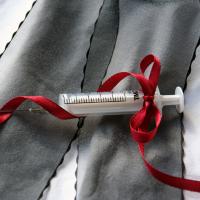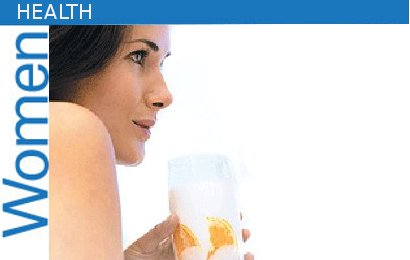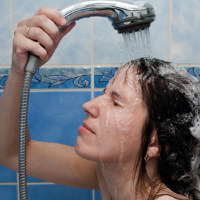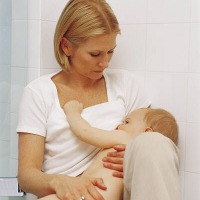
Some exciting things happened during the year 2010, among others, the discovery of a number of breakthrough HIV / AIDS prevention. On the other hand there is a lack of funding in various states, plus global sentiment towards the existence of homosexuals.
Human immunodeficiency virus (HIV) is still the most frightening health threats because there is no cure. However encouraging, a number of important achievements in research of HIV / AIDS throughout 2010 has given new hope in the future.
The following are 10 things that mark the achievement at a time of frustration in dealing with HIV / AIDS throughout the year 2010:
1. Vaginal Gel
After many years did not show positive developments, this year a study on HIV / AIDS has created a breakthrough to prevent transmission. Vaginal microbicide gel called proven effective in preventing infections in trials of the women in South Africa.
2. ARVs do not only treat but also prevent
Antiretroviral (ARV) drugs that are used regularly by people living with HIV to prevent AIDS now have more benefits. Recently, a study proves antiretrovirals can be consumed as a precautionary measure infection or pre-exposure prophylaxis (PREP) in high-risk groups including homosexuals.
3. TB rapid test
This December the United Nations recommended the new test method to detect tuberculosis (TB) in people with HIV, which only takes less than 2 hours. TB is an opportunistic infection or accompanying the most kills with HIV / AIDS, followed by pneumonia and influenza.
4. Teratment 2.0
In July 2010, the UN launched a new approach in the treatment of HIV / AIDS drastically with seeking access to drugs easier and cheaper. 2.0 Treatment Approaches called it had 2 main objectives namely to prevent 10 million deaths in 2050 while pressing the 30 percent rate of transmission.
5. First patent pool license
In order to reduce costs pengibatan HIV / AIDS, the international body which deals with the financing of HIV therapy-malaria-tuberculosis, UNTAID create a new mechanism of drug patent registration by a manufacturer called patent pool license first. This mechanism permits loosen patent medicines for its generic version can be made by other companies.
6. HIV travel ban to be revoked
November 2, 2010 is a historic day for people living with HIV / AIDS, because after 22 years of ban, the United States finally declared free of HIV entry and travel to that country. Revocation of such prohibition also conducted by China and Namibia.
7. Global access to AIDS treatment
As a follow up summit AIDS 2006, at the end of 2010, most world leaders have agreed on global access to prevention and treatment of HIV / AIDS. The agreement was formulated in the new vision of zero-infection the UNAIDS namely, zero discrimination, and zero deaths related to AIDS.
8. Crisis funding
In addition to a number of positive achievements, the handling of HIV / AIDS also face a number of constraints including funding crisis. This year UNTAID announced that in the last 3 years there is a shortage of funds amounting to U.S. $ 1 billion worldwide so that hamper efforts to improve medical care of HIV / AIDS.
9. Anti-homosexual sentiment
Another obstacle which has also increased in efforts to prevent HIV / AIDS is anti-homosexual sentiments which tend to increase in 2010. Uganda plans to apply the legislation of anti-gay, gay couples holding Malawi engaged and Prime Minister of Kenya, Raila Odinga urged arresting gay couples. The impact of homosexuals have difficulties in accessing health services.
10. Free Trade Agreement India-European Union
Latest obstacle in fighting HIV / AIDS emerged in November 2010 when India and the European Union to discuss free trade agreement or Free Trade Agreement (FTA). One consequence, Indian pharmaceutical companies are no longer free to produce cheap generic versions of antiretroviral drugs. This agreement received harsh opposition from the activists of HIV / AIDS worldwide
Human immunodeficiency virus (HIV) is still the most frightening health threats because there is no cure. However encouraging, a number of important achievements in research of HIV / AIDS throughout 2010 has given new hope in the future.
The following are 10 things that mark the achievement at a time of frustration in dealing with HIV / AIDS throughout the year 2010:
1. Vaginal Gel
After many years did not show positive developments, this year a study on HIV / AIDS has created a breakthrough to prevent transmission. Vaginal microbicide gel called proven effective in preventing infections in trials of the women in South Africa.
2. ARVs do not only treat but also prevent
Antiretroviral (ARV) drugs that are used regularly by people living with HIV to prevent AIDS now have more benefits. Recently, a study proves antiretrovirals can be consumed as a precautionary measure infection or pre-exposure prophylaxis (PREP) in high-risk groups including homosexuals.
3. TB rapid test
This December the United Nations recommended the new test method to detect tuberculosis (TB) in people with HIV, which only takes less than 2 hours. TB is an opportunistic infection or accompanying the most kills with HIV / AIDS, followed by pneumonia and influenza.
4. Teratment 2.0
In July 2010, the UN launched a new approach in the treatment of HIV / AIDS drastically with seeking access to drugs easier and cheaper. 2.0 Treatment Approaches called it had 2 main objectives namely to prevent 10 million deaths in 2050 while pressing the 30 percent rate of transmission.
5. First patent pool license
In order to reduce costs pengibatan HIV / AIDS, the international body which deals with the financing of HIV therapy-malaria-tuberculosis, UNTAID create a new mechanism of drug patent registration by a manufacturer called patent pool license first. This mechanism permits loosen patent medicines for its generic version can be made by other companies.
6. HIV travel ban to be revoked
November 2, 2010 is a historic day for people living with HIV / AIDS, because after 22 years of ban, the United States finally declared free of HIV entry and travel to that country. Revocation of such prohibition also conducted by China and Namibia.
7. Global access to AIDS treatment
As a follow up summit AIDS 2006, at the end of 2010, most world leaders have agreed on global access to prevention and treatment of HIV / AIDS. The agreement was formulated in the new vision of zero-infection the UNAIDS namely, zero discrimination, and zero deaths related to AIDS.
8. Crisis funding
In addition to a number of positive achievements, the handling of HIV / AIDS also face a number of constraints including funding crisis. This year UNTAID announced that in the last 3 years there is a shortage of funds amounting to U.S. $ 1 billion worldwide so that hamper efforts to improve medical care of HIV / AIDS.
9. Anti-homosexual sentiment
Another obstacle which has also increased in efforts to prevent HIV / AIDS is anti-homosexual sentiments which tend to increase in 2010. Uganda plans to apply the legislation of anti-gay, gay couples holding Malawi engaged and Prime Minister of Kenya, Raila Odinga urged arresting gay couples. The impact of homosexuals have difficulties in accessing health services.
10. Free Trade Agreement India-European Union
Latest obstacle in fighting HIV / AIDS emerged in November 2010 when India and the European Union to discuss free trade agreement or Free Trade Agreement (FTA). One consequence, Indian pharmaceutical companies are no longer free to produce cheap generic versions of antiretroviral drugs. This agreement received harsh opposition from the activists of HIV / AIDS worldwide



